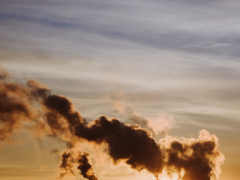Achieving zero emissions in all sectors is a difficult task
Many countries have made a commitment to reduce their greenhouse gas emissions to net zero by or around 2050. If some sectors have residual emissions, these must be compensated for by removing CO2 from the air and storing it. This can be done, for example, through large-scale reforestation or the use of biomass in combination with CO2 capture and storage. These measures involve risks, in particular for food security and biodiversity. An important conclusion from PBL’s study Mitigating greenhouse gas emissions in hard-to-abate sectors, published in cooperation with Utrecht University, is therefore that far more effort must be made globally to reduce emissions in the sectors where this is most difficult: industry, the built environment, agriculture, aviation and shipping.
The aim of the study was to map out why it is difficult to reduce emissions in the sectors mentioned above, which measures can be taken to reduce emissions as much as possible in these sectors, and use scenarios to explore the impact of these measures on reducing the need to remove CO2 from the atmosphere.
The study is based on various scenarios on limiting the global maximum temperature increase to 1.5 °C. In each scenario, reforestation or a combination of the use of biomass with carbon capture and storage is a necessary part of the package to achieve the zero-emission targets. However, the dependence on these measures can be limited by sectoral measures that contribute to a structural reduction in emissions.
Obstacles to rapid emission reduction
It is difficult to reduce emissions in industry, aviation, shipping, the built environment and agriculture for several reasons. These include, for example, the rapid growth in economic activities in these sectors, even after a temporary decline in some of them during the COVID-19 pandemic, the lack of commercially available technologies to reduce emissions on a large scale and challenges in the application of measures. Particularly in industry, aviation and shipping, there are high start-up costs for new technologies, which do not yet compete with current, unsustainable technologies. The built environment and agriculture are characterised by a multitude of users, often with limited access to capital, knowledge and training. Local conditions also differ, which hinders the rapid adoption of innovative forms of emission reduction.
Promising measures for difficult sectors
Various measures are conceivable in removing barriers to emission reduction. In general, this concerns technological innovations, structural changes that contribute to a more circular use of raw materials and more efficient waste processing as well as lifestyle changes. These changes can be promoted through financial instruments, such as taxes (e.g. on airline tickets and meat) and grants, as well as through regulation and direct investment in research and training.
Measures for aviation and shipping include long-term investments in more sustainable fuels and the promotion of alternative, cleaner modes of transport. Measures in the industry include electrification, alternative fuels and carbon capture and storage, as well as a more circular use of raw materials and — on the consumer side — promotion of consumption of products that meet sustainability standards. In the built environment, several measures can be considered in the area of energy saving and insulation, local electricity and energy generation, and — on the consumer side — strengthening energy-conscious behaviour. For the lowest-income countries, a shift from cooking on traditional biomass to cleaner options is an important measure to reduce emissions.
Crucial role for the agricultural sector in achieving emission reduction targets
Agriculture, in particular, plays a crucial role in achieving zero-emissions targets, because of the great potential to directly and indirectly reduce emissions. The scenarios show that the residual emissions in this sector remain the highest. In addition to technological measures to make agriculture more efficient, a change on the consumer side could certainly make a major contribution here: cultured meat or the switch to a substantially lower consumption of meat.




